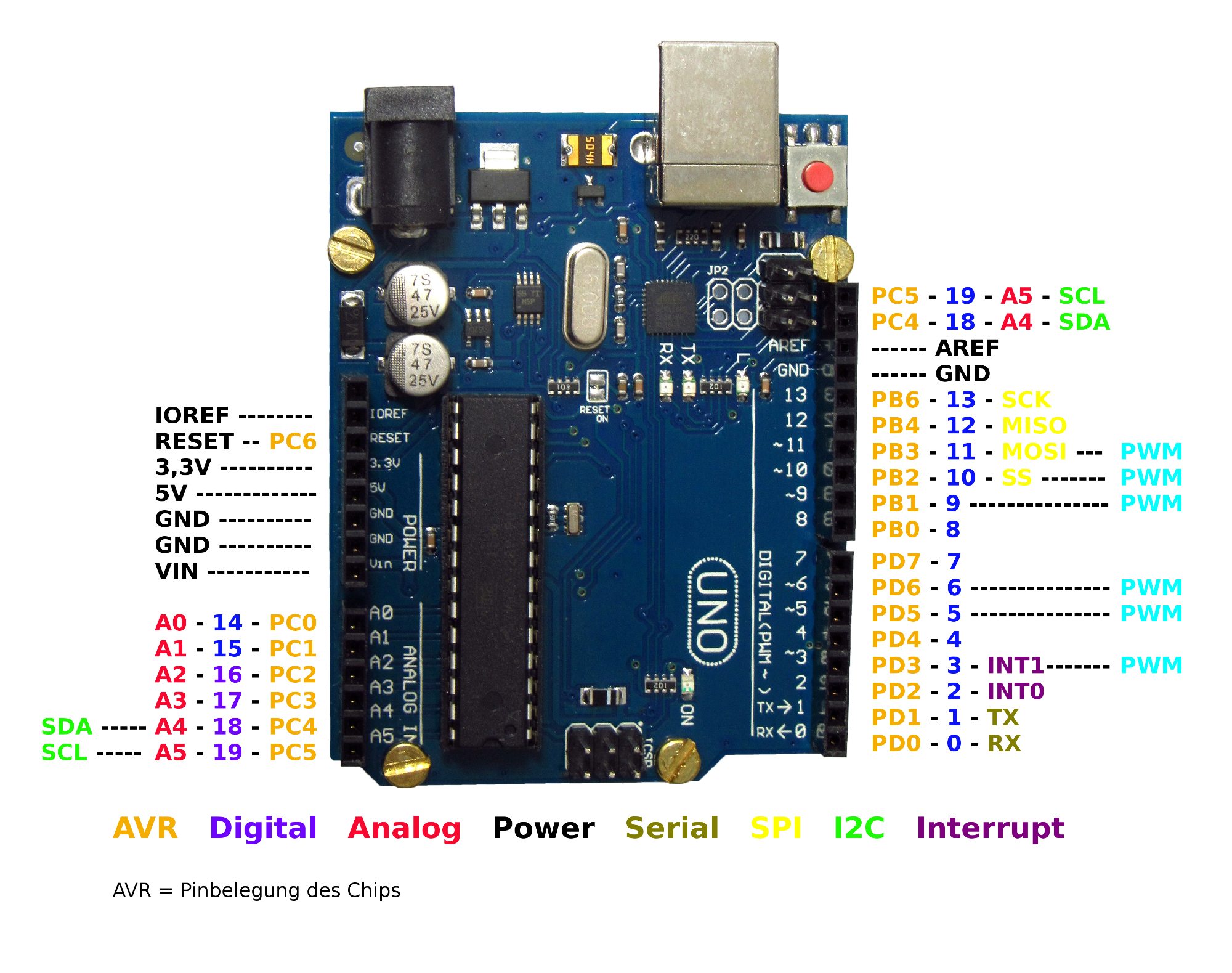

USB port is added on the board to develop serial communication with the computer.
Arduino Uno comes with a USB interface i.e. Apart from USB, a battery or AC to DC adopter can also be used to power the board. You can download the Arduino UNO datasheet by clicking the below button:. Arduino UNO supports 3 types of communication protocols, used for interfacing with third-party peripherals, named:. Arduino UNO comes with 3 types of memories associated with it, named:. PWM pins in Arduino UNO are D3, D5, D6, D9, D10 and D11. Out of 14 digital pins, 6 pins are used for generating PWM pulses of 8-Bit resolution. It also has 6 Power Pins, which provide different voltage levels. In order to reset the board, we need to make this pin LOW. It also has 1 Reset Pin, which is used to reset the board programmatically.  It also has 6 analog pins starting from A0 to A5. Arduino Uno Pinout consists of 14 digital pins starting from D0 to D13. It comes with a crystal oscillator of 16MHz, which is its operating frequency. Arduino UNO has a maximum current rating of 40mA, so the load shouldn't exceed this current rating or you may harm the board. It has an operating voltage of 5V while the input voltage may vary from 7V to 12V.
It also has 6 analog pins starting from A0 to A5. Arduino Uno Pinout consists of 14 digital pins starting from D0 to D13. It comes with a crystal oscillator of 16MHz, which is its operating frequency. Arduino UNO has a maximum current rating of 40mA, so the load shouldn't exceed this current rating or you may harm the board. It has an operating voltage of 5V while the input voltage may vary from 7V to 12V. 
The software used for writing, compiling & uploading code to Arduino boards is called Arduino IDE (Integrated Development Environment), which is free to download from Arduino Official Site. Arduino Uno is a microcontroller board, developed by, based on the Atmega328 microcontroller and is marked as the first Arduino board developed(UNO means "one" in Italian). I'll try to cover each and everything related to Arduino Uno, so you get a clear idea of what it does, its main features, working and everything you need to know. Few main features of Arduino UNO are shown in the below figure:.










